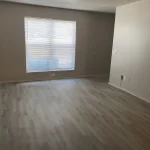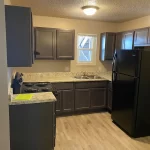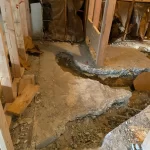The Charm—and Cost—of Old Homes
There’s something undeniably enchanting about old houses. Their creaky staircases, ornate woodwork, and weathered stone walls tell stories of generations past. But beneath that charm lies a challenge—maintaining these historic properties is often expensive. Without financial support, many of these homes risk being abandoned or demolished.
This is where using historical rent credits for affordable housing comes in. By blending preservation incentives with affordable housing strategies, communities can protect their heritage while offering safe, reasonably priced homes.
Let’s explore more with Midtown Builders!
What Are Historical Rent Credits and How Do They Work?
Historical rent credits for affordable housing are financial incentives that help preserve old properties while making them livable and affordable for tenants. In simple terms, property owners receive credits or tax benefits for restoring historic homes instead of tearing them down—on the condition that some or all units are offered as affordable housing. This approach allows communities to save their heritage while addressing housing shortages.
Role of Historical Societies
Historical societies act as guardians of the past. Through historical preservation housing initiatives, they provide rent credits or tax benefits that encourage property owners to restore rather than replace. These credits lighten financial burdens while ensuring structures remain part of the community fabric.
Qualifying for Rent Credits
Not every spooky old home qualifies. To access historic tax credits, owners typically need to:
- Register the property with a recognized local or national preservation program.
- Maintain architectural integrity to ensure historic details remain intact.
- Collaborate with affordable housing initiatives to convert spaces into affordable historic housing. for today’s residents.
This unique mix of requirements ensures preservation and affordability work hand in hand.
Why Haunted Houses Make the Perfect Affordable Housing Candidate
On Halloween, it’s easy to see old houses as eerie backdrops for ghost stories. But what if those “haunted” reputations could serve a purpose?
Properties rumored to be haunted often struggle on the real estate market. Buyers shy away, and landlords face vacancy challenges. By reimagining these haunted house affordable housing opportunities, communities can turn ghostly reputations into functional housing solutions.
In fact, using haunted historic homes rent credits provides a clever way to transform what many consider liabilities into community assets.
A Halloween Story: When Spooky Meets Subsidized
In Los Angeles, the long-abandoned Linda Vista Community Hospital—once rumored to be haunted—was transformed into Hollenbeck Terrace, an affordable housing community for seniors. Using a combination of historic tax credits and low-income housing tax credits, developers preserved the building’s marble staircases and historic façade while converting the eerie wards into nearly 100 safe, affordable units.
Meanwhile, in Houston, the Jefferson Davis Hospital, built over an old municipal cemetery and infamous for ghost stories, found new life as the Elder Street Artist Lofts. Renovated in 2005 with the help of historic preservation incentives, the property now offers affordable live/work spaces for artists while maintaining its historic architecture.
These projects prove that even buildings with the spookiest reputations can become community assets when historical rent credits for affordable housing and preservation programs are put to work.
Steps to Preserve & Rent — From Application to Tenancy
Transforming old homes into affordable historic housing takes planning, but the process is more straightforward than many expect:
- Identify Eligible Properties – Focus on structures with historical value, even those with spooky reputations.
- Apply for Credits – Work with historical society incentives and local housing agencies.
- Secure Funding – Combine tax credits for preservation with Low-Income Housing Tax Credits (LIHTC).
- Renovate Thoughtfully – Keep original details while making spaces livable.
- Lease to Tenants – Transition “haunted” spaces into haunted affordable units that serve today’s community.
Each step bridges the gap between preserving the past and creating affordable futures.
Final Thoughts: Where History and Housing Meet—Even with Ghosts
Halloween reminds us that old houses hold mysteries, but they also hold opportunities. Through using historical rent credits for affordable housing, properties once viewed as burdens—or even cursed—can become cornerstones of strong communities.
For property owners, developers, and local leaders, this approach offers a win-win: protect history, provide homes, and turn ghostly legends into living legacies.
At Midtown Builders, we believe the past and future can co-exist beautifully. Preserving old homes doesn’t just honor heritage—it creates places where families can thrive. And if a ghost or two tags along? Well, that just makes the story even better.
Have a spooky old property in mind? Connect with Midtown Builders to see how historical rent credits can bring it back to life.










